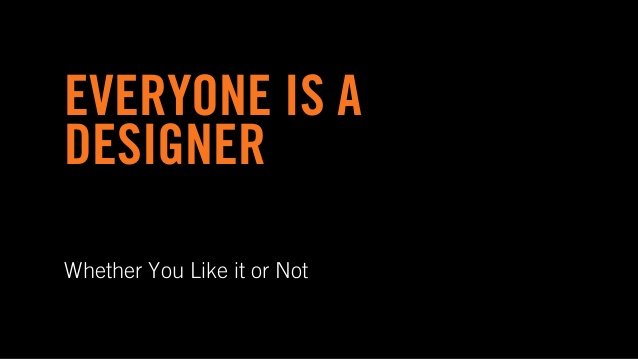Everyone Is A Designer: How Do You Compete With That?
The job landscape has changed and I am not just referring to the Great Recession in the last 5 years. I am talking about the last 25 years. There are already certain professions connected to graphic design, printing and advertising that have already disappeared. Does anyone remember the layout artist or a typesetter? I graduated from a vocational technical high school in Philadelphia that offered commercial art in the mid 1980s. If you are under the age of 30, you probably never heard of this term. But before I chose it, I almost chose printing. In 9th grade year, I spent 2 months working with movable type and loved it. But next year, this trade disappeared and I never knew why.
Now I do.
I graduated from the University of the Arts with a BFA in Graphic Design in 1990. At this time, the UArts graphic design department was known for adhering to the Swiss style also known as the International Typographic Style. Most of my professors graduated from the Basel School of Design in Switzerland. This style emphasized using type and photography/simple illustrations in very visual economical ways with preference towards geometric shapes, craftsmanship and simplicity. I learned in the most traditional way: sitting at an art table producing simple compositions using protractors, a compass, ruling pens and ink. The goal was to develop a visual eye, creativity and technical abilities. I also learned the science of typography, the psychology of color and other things. After graduation, I worked as an creative director at various organizations. Some of my work was even profiled in Print Magazine in the 1990s. My specialties are logo and brand identity.
But something has changed. Five tectonic shifts have impacted the graphic design and advertising industries.
1. The Personal Computer
The Macintosh computer was celebrated and vilified by designers in the 1980s and early 1990s. Some felt it led to a decline in creative thinking and technical skill. Others felt like it opened the door for more possibilities. Either way, it changed the landscape of graphic design and other professions such as architecture, industrial design and advertising. It made layout artists obsolete and sped up the creative process because you could output ideas much faster. Nevertheless, it gave designers a new tool. Once the affordable computer became synonymous with design, it meant that anyone could create design using the same tools as the experts.
2. Access to Graphic Applications
When I graduated from college, anyone who was not a designer did not know about Freehand (now discontinued), Photoshop or Illustrator. Over the years, these graphic programs improved and gave designers an edge. In the 1990s, Adobe started creating inexpensive graphics software for non-designers (Photoshop Elements anyone?). Its original software had a huge learning curve and was expensive. Today, most computers come with their own basic graphics software that is capable of producing some of what Adobe products can do. Today, many of the standard graphics programs are being taught to high school students.
3. The Internet
The internet opened up a whole new area for designers to inhabit. In the mid 1990s, I bought a book to learn html code so that I could offer myself as a website designer. But then some idiot invented Adobe Pagemill (now defunct) which made html coding easier! LOL The internet has accelerated #1 and #2 even more. There are online and free downloable graphics programs. Either way, internet entrepreneurs have succeeded in making anyone and everyone content creators. Anyone can create but to be a graphic designer was special. Not anymore. There are also websites that provide logos for free or allow you to compete with other designers for pennies. Social media has also added another dimension to design and marketing but this area does not necessarily require expertise. Either way, the competition has become everyone.
4. The Blurred Lines of Photography, Video and Print
The word digital has upended everything. At one point, if you needed a video, you went to a videographer. If you needed an illustration, you went to an illustrator. Today, there are jobs where you have to do it all because the invention of digital technology means you can seemlessly move across platforms and adapt content. I do print, website, video, public relations, social media design and data tracking. Twenty years ago, I was only involved with the visual concept. I still see full time graphic design jobs at the corporate level. But you know what has become common? the Graphic Design Intern. Some companies and nonprofts want someone to do full time design work for part time wages…or for free. The democratization of graphic design has pushed wages down.
5. Do I Need an Art Degree?
It depends on what you want to do. Some people have a natural gift for visual communication and dont need a degree. This group always existed but they were a small admired group. Today, stir in the past 4 shifts and what is the result? Degreed graphic design professionals are competing with possibly anyone who has a computer and the right software. Everyone calls themselves a designer now.
Design work is in demand but the jobs are adding a slew of skills that do not match compensation. (This is one reason why I went back to get a Masters Degree.)
We are in the midst of another technological revolution and the casualty will be those who dont know where things are heading. Take a business and marketing class and combine it with your design education. Become a DIY entrepreneur. Be a good critical and strategic thinker…and talented designer. This is the space I am attempting to occupy. How will you compete?
